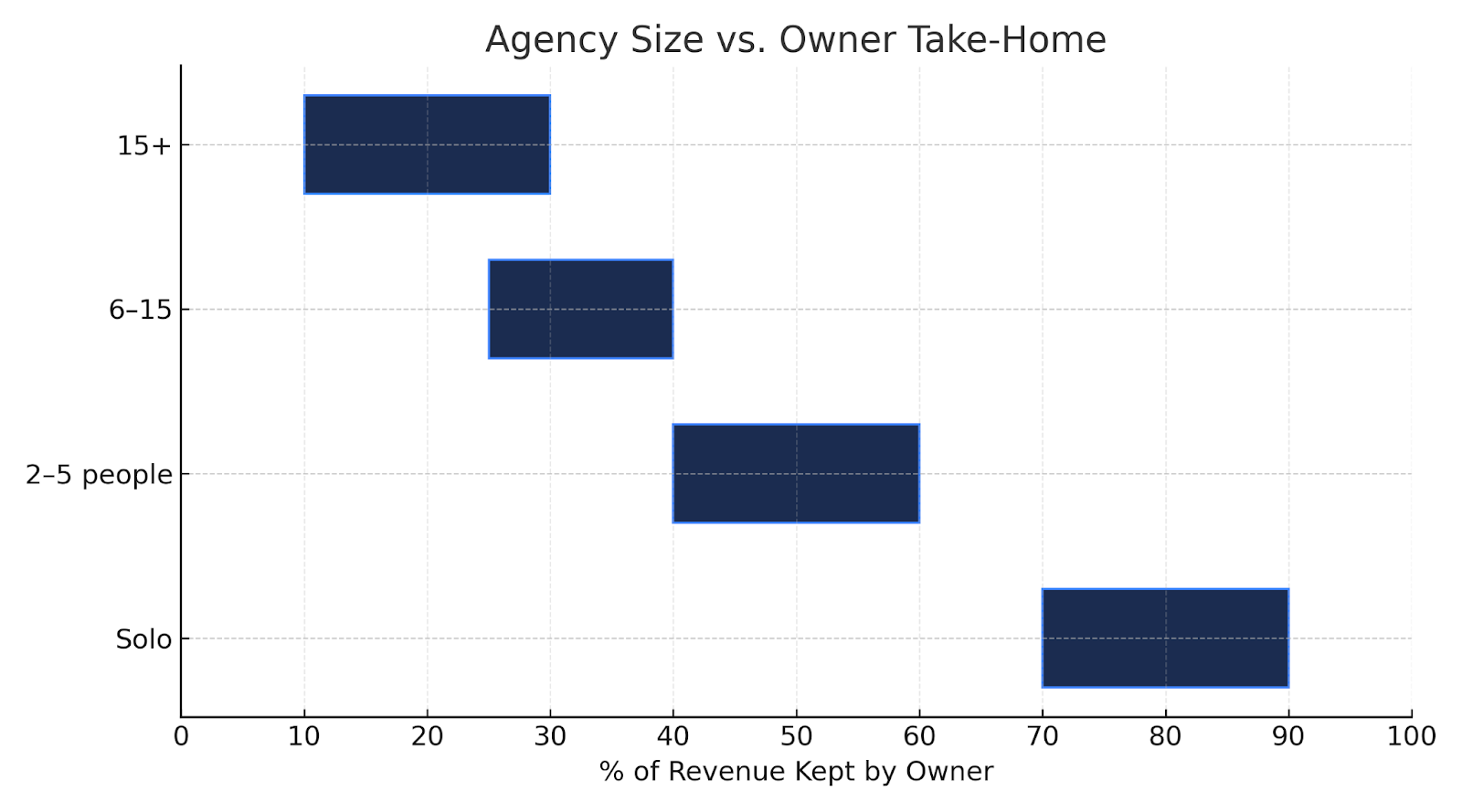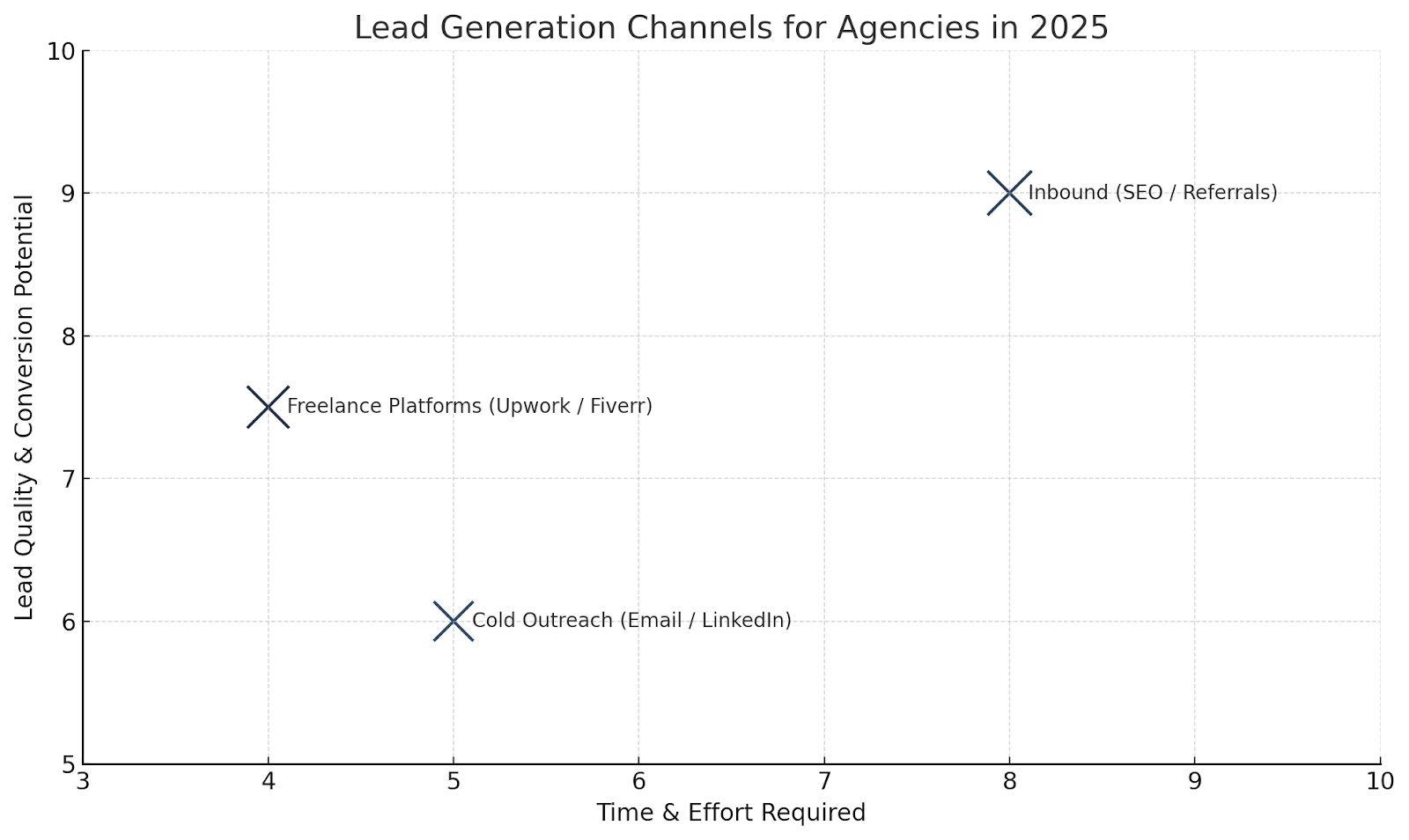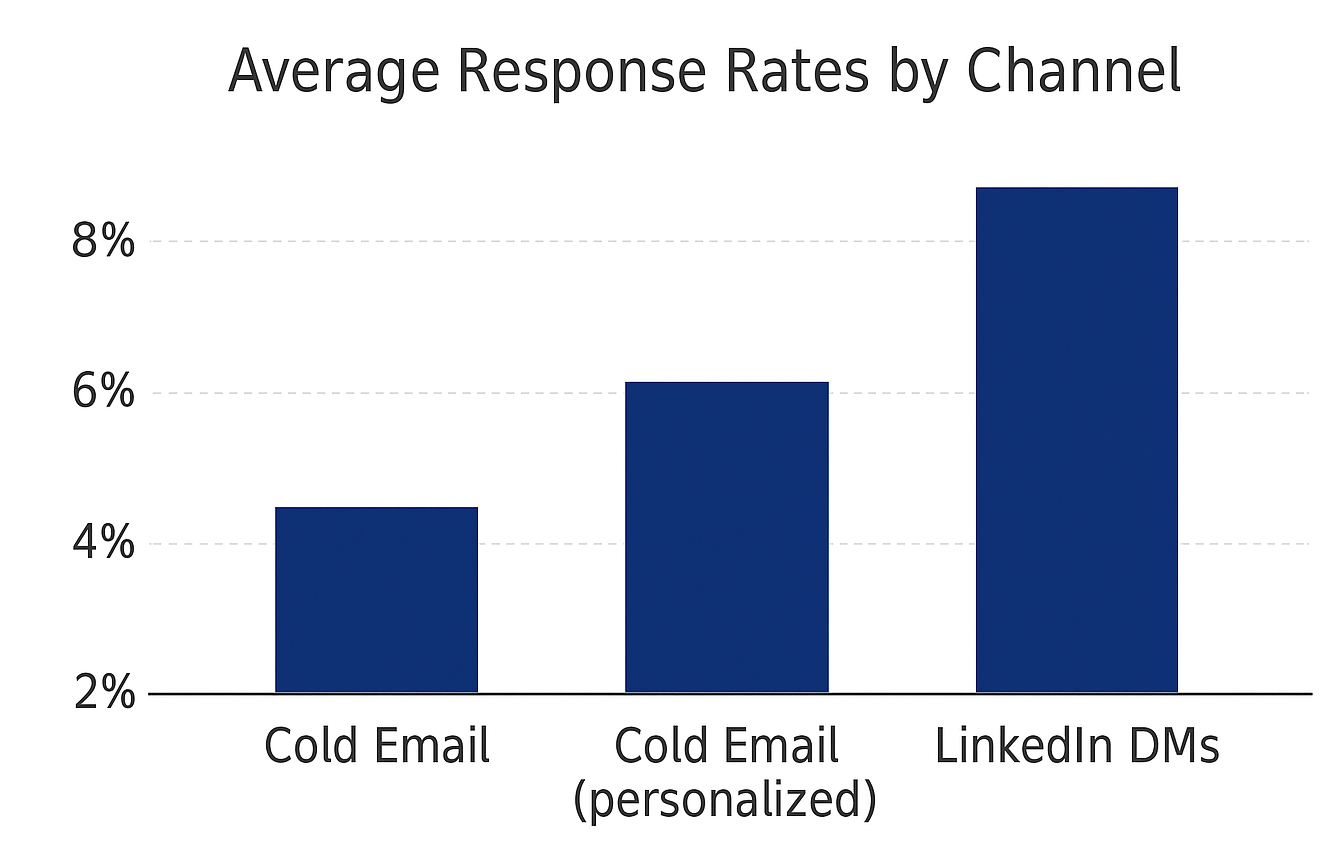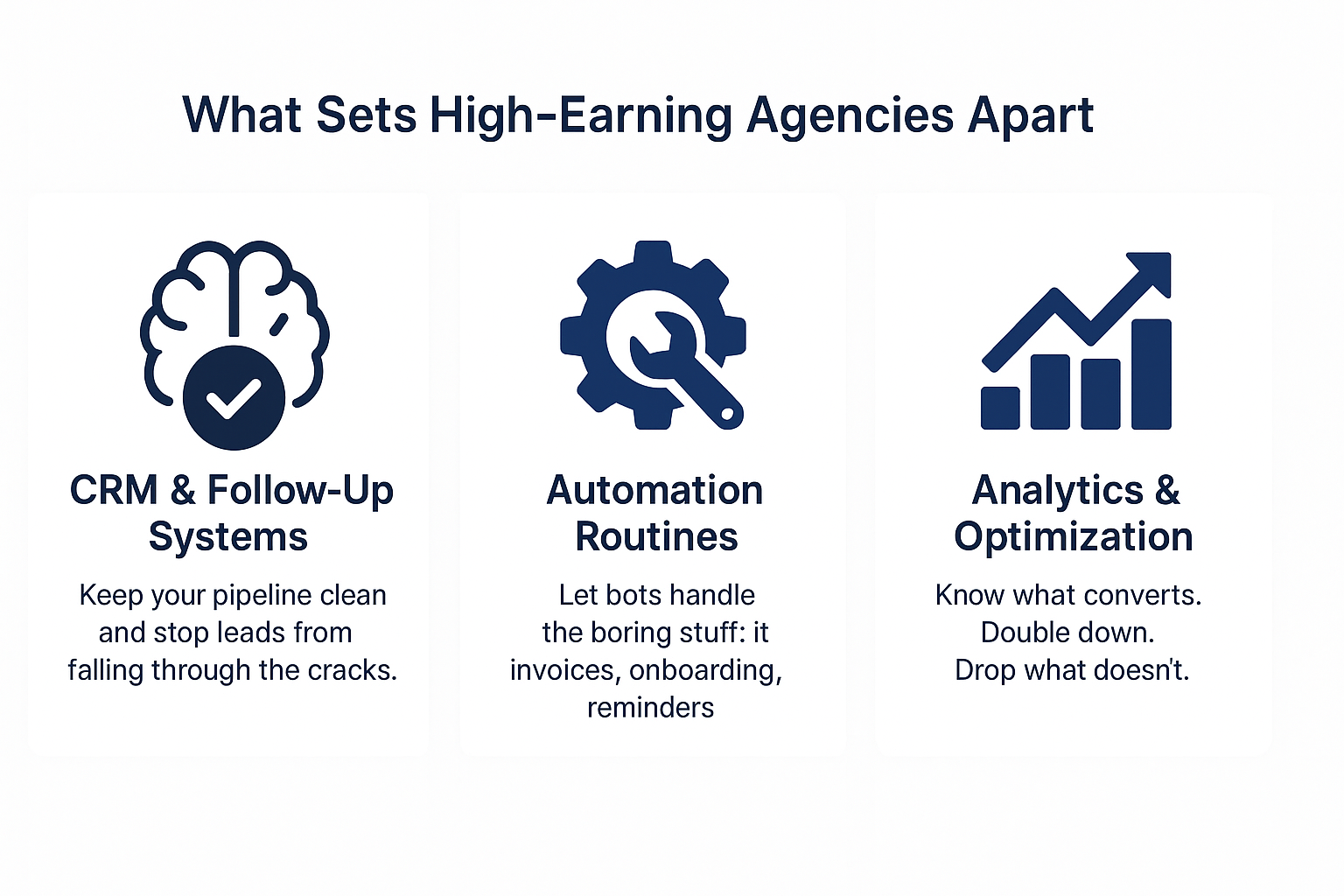Talking about income in 2025 isn’t just curiosity, it’s about understanding where you stand in a market that’s changing every month. Agency owners today aren’t working in the same reality they were even three years ago. New client channels appear, service demand shifts, and the cost of running a team has gone up.
That’s true whether you run a creative shop, a niche performance team, or operate as an independent insurance agency owner – salary benchmarks in all these cases have moved.
Of course, the big question – “how much do digital marketing agency owners make?” – doesn’t have one clear answer. It comes down to the type of agency you run, the way you structure your work, and the services you provide.
Now we’ll look at what shapes an agency owner salary in 2025, where the main income drivers come from, and how you can push your numbers higher.
What Determines an Agency Owner’s Salary?
When you compare incomes between agency owners, you’ll notice something funny – two people can work the same hours, drink the same amount of coffee, and still end up with very different paydays. Most of that comes down to how the business is built on the inside.
First, there’s the size of the agency. Running solo is like driving a small, fast car – you can take sharp turns and keep most of the fuel for yourself, but there’s only so much you can carry. A small team lets you load up with more clients and bigger projects, although now you’ve got passengers to manage and extra seats to pay for. Large agencies can haul in those “enterprise” contracts everyone talks about, yet the owner’s share can shrink once the whole crew gets paid.

Then comes the way you bill clients. Project work feels a bit like sprinting – you go hard, cross the finish line, and get paid, but then you start again from zero. Retainers are more like a steady jog, keeping your pace and income predictable as long as you keep the client happy. Performance-based deals can be a jackpot when results are strong, but there’s always the chance they won’t land the way you expect.
Finally, the niche and services you offer can tilt the scales. Agencies that specialise in high-ticket PPC campaigns or fine-tuning conversion rates for e-commerce often charge more than “we-do-everything” shops. The closer you can tie your work to a client’s revenue, the easier it is to have a rate that doesn’t get questioned, especially when the market is crowded.
These are the levers you can pull from inside your own walls. Next, we’ll look at the outside forces that can push your income higher or slow it down, no matter how good your setup is.
Key Factors That Affect Marketing Agency Owner Income
Even if two agencies look the same on paper, what the owner takes home can be very different. A lot of this comes from things outside your daily work that still have a big say in how much you earn.
1. Location and market
Where your agency is based still matters in 2025. Working in a big city with larger companies usually means bigger budgets. Being in a smaller city can mean smaller contracts, but it can also mean lower costs for you. And if you work with clients online, your location matters less than it used to.
2. Experience and reputation
People hire those they trust. Owners who can show solid results, share real client stories, and have others speak well of them often charge more and get chosen faster. A good name tends to grow by itself – the better your track record, the less you have to “sell” yourself in every meeting.
3. Type of clients
Small businesses are often quicker to make decisions and easier to reach, but their budgets can be tight. Big companies can bring long projects with better pay, though they also move slower and involve more people in each decision.
4. Repeat business
When a large part of your work comes from past clients, income becomes steadier and you spend less time chasing new leads. Familiar clients know how you work, you know their needs, and projects tend to move faster.
When you put these outside factors next to the way your agency is set up inside, you start to see the real picture of your earning potential. Once you see how they interact, it’s easier to put the real numbers into context – and that’s exactly what we’ll look at next.
Real Salary Benchmarks & Profitability Stats
Talking about how agency owners earn is one thing – seeing the numbers side by side is another. Once you put actual salaries and profits on the table, the picture feels a lot more real.
To make it easy, we’ve pulled together average figures for different types of agencies, including a typical insurance agency owner salary, and split them into what owners pay themselves as a salary and what the business earns in profit. You’ll also see how wide the range can be depending on the model and the market you’re in.

Looking at this, it’s clear there’s no single “standard” income for an agency owner. The spread is huge, and it’s shaped by all the internal and external factors we’ve just covered. What really matters is knowing how to move your agency toward the higher end of that range – and a big part of that comes down to where and how you find your clients. So, let’s dig into how agencies are finding those clients in 2025.
Where Marketing Agencies Get Clients in 2025
Because the agency model might shift, pricing can evolve, but one thing stays the same – if there’s no pipeline, there’s no business.
We’ve grouped the main channels agencies use to attract clients in 2025. Each has its pros and trade-offs, and most successful agencies use more than one to keep things steady:
- Direct outreach (cold email, LinkedIn)
- Inbound (SEO, referrals, website)
- Freelance platforms (Upwork, Fiverr, Toptal)

Let’s break down each channel.
Direct Outreach (Cold Email, LinkedIn)
Still one of the fastest ways to get in front of decision-makers in niche B2B markets. It’s not only about blasting a thousand emails and hoping for the best. Agencies that personalize, research, and follow up methodically still get replies, even in crowded inboxes.
In fact, most cold email campaigns get 1-5% response rates, and with proper targeting and personalization, you can push it up to 8%. On LinkedIn, response rates often range between 5-20%, especially in high-intent segments.

This method works, but it takes consistency, systems, and a thick skin. Especially if you’re just starting out.
Not sure where to start with tools and targeting? Check out our top lead gen tools for 2025
Inbound (SEO, Referrals, Website)
Inbound leads feel like magic. They come to you, they already know what they want, and they often convert better. But building this kind of trust takes time and a fair bit of content, reputation, or both.
Referrals remain one of the most powerful drivers – 65% of new business opportunities for service providers come through referrals, and over 50% of small businesses say they get their best clients this way.
For agencies with a solid track record, referrals can be a major driver. A single happy client can lead to five more – if you stay on their radar and make it easy for them to send people your way.
Freelance Platforms (Upwork, Fiverr, Toptal)
For many, this starts as a backup plan. But the truth is: even established agencies use Upwork to keep the pipeline full with ready-to-hire clients.
It’s not just about small gigs anymore. Upwork now sees over 850,000 active clients posting jobs, while more than 18 million freelancers compete for their attention. If you know how to niche down and pitch right, it’s still one of the easiest ways to generate cash flow, especially when speed matters.
One customer support and helpdesk consulting agency used GigRadar on Upwork to land consistent, high-quality projects – and ended up earning over $440K.
Read the full case study
Tools That Help Agency Owners Increase Their Revenue
There’s a reason some agency owners grow faster than others and it’s rarely about talent alone. What often makes the difference is how they manage their time, leads, and delivery.
In 2025, most revenue-focused agencies rely on:
- Simple CRMs, automation, and analytics
- Workflow integrations with freelance platforms
- Smart lead generation tools that match their niche
Tools can’t replace good strategy, but they do free up headspace for what actually moves the needle.

Let’s look at what many agency owners rely on to increase revenue without adding more hours to their week.
CRM, automation, and analytics
When you’re juggling multiple clients, pitches, and follow-ups, it’s easy for leads to fall through the cracks. A simple CRM can fix that. Not the bloated kind with 200 features you’ll never use – just something that keeps your pipeline clean and nudges you when it’s time to follow up.
Then there’s automation. Sending proposals, onboarding clients, sending invoices – if you’re still doing it all manually, that’s time you could be spending on actual client work or winning the next deal.
Analytics is the quieter hero. It tells you which channels are working, where deals tend to stall, and what your real conversion rate is. You can’t improve what you don’t track and agency margins are often thin enough that 5-10% better conversion can change your month.
Integration with freelance platforms
The most consistent agencies don’t just use Upwork occasionally, they treat it as a lead engine. And they build around it.
That’s where integrations come in. Instead of checking the site every few hours or chasing alerts across email, smart teams connect platforms directly into their workflow. They get notified only when a relevant job appears. Some even go a step further – auto-generating drafts for replies or tracking which templates perform best.
It’s not about hacking the algorithm. It’s about removing all the small, boring steps that slow you down, so you can be the first to reply with a relevant pitch when the right job goes live.
“Finding clients on Upwork is one thing. Doing it every day without wasting hours is another.”
Once this system is in place, the next question becomes – how do you make it even faster? How do you stop sifting through low-quality listings and focus only on the jobs that match your niche, pricing, and strengths?
That’s where GigRadar steps in. Let’s break it down.
How GigRadar Helps Agency Owners Grow Faster
Most agency owners agree: Upwork works, but it also eats time. Browsing job listings, filtering low-quality ones, checking for budget fit, writing replies… it’s doable, but not scalable. GigRadar fixes that.
This tool doesn’t just show you jobs, it filters them for you. You set the budget threshold, the category, the keywords, and GigRadar monitors Upwork in real time. When a match appears, you get a notification instantly – not 2 hours later when someone else already closed the deal.
Some users go a step further: they use GigRadar’s tools to generate quick-draft replies, reuse templates that actually convert, and track which gigs convert better based on timing and messaging.
This isn’t about automating everything. It’s about staying focused on the 10% of gigs that actually fit your niche and pricing – and being the first to respond with something relevant.
“I was spending 3-4 hours a day just filtering and responding to jobs. Now it’s 30 minutes.”
Freelance agency owner, design niche
The result? Better leads. Faster responses. More time to do actual client work.
If Upwork is part of your growth strategy, GigRadar is how you make it scale.




.jpg)
.jpg)
.jpg)
